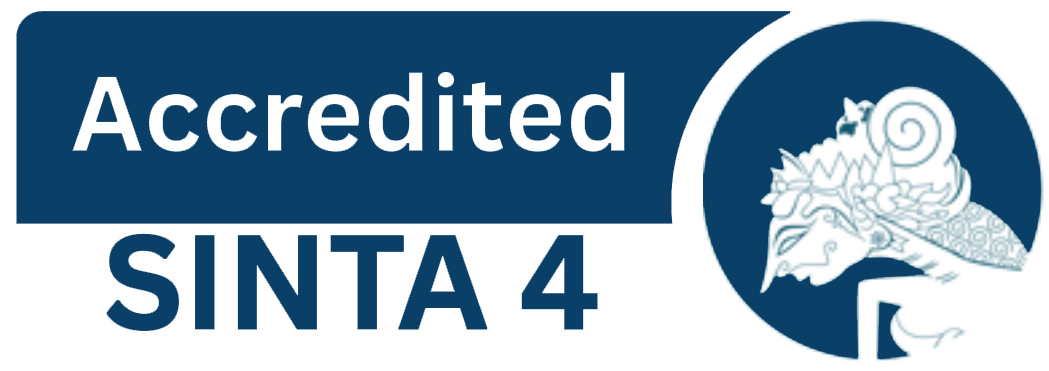ANALISIS KEBUTUHAN SISWA DALAM MATERI BUKU TEKS BAHASA INGGRIS TINGKAT SMK
DOI:
https://doi.org/10.22460/p2m.v2i2p209-216.180Keywords:
Analisis Kebutuhan Siswa, Buku Teks Bahasa Inggris, SMK.Abstract
ABSTRAK
Â
Pembelajaran bahasa Inggris di Sekolah Menengah Kejuruan (SMK) berbeda dengan pembelajaran bahasa Inggris di Sekolah Menengah Umum lainnya. Di SMK, orientasinya adalah mempersiapkan siswa agar mampu berkiprah di dunia kerja. Melihat fenomena di atas, guru-guru Bahasa Inggris di SMK diharapkan memiliki kemampuan dalam menganalisis kebutuhan siswa sehingga mereka dapat merancang proses belajar- mengajar yang sesuai, terutama dalam keterampilan berbahasa Inggris (Listening, Speaking, Reading, dan Writing) dan komponen dalam bahasa Inggris (Grammar & Vocabulary). Tujuan dari penelitian ini adalah untuk mengidentifikasi beberapa informasi faktual mengenai kebutuhan siswa SMK dalam pembelajaran bahasa Inggris,.dan menganalisis kesesuaian antara kandungan dalam buku teks pelajaran Bahasa Inggris dengan siswa di SMK dari segi kebutuhan siswa (students’ needs). Subjek yang diteliti adalah siswa SMK dan buku pelajaran bahasa Inggris, baik edisi KTSP maupun edisi Kurikulum 2013, dari 7 (tujuh) SMK yang menyelenggarakan jurusan TKJ di daerah Bandung dan Cimahi. Hasil menunjukkan kebutuhan siswa terhadap pembelajaran bahasa Inggris adalah untuk memenuhi kebutuhan profesi akademik dan masa depan siswa, yang melibatkan kemampuan bahasa dan beberapa komponen bahasa. Sedangkan dalam hal kesesuaian antara kandungan dalam buku teks bahasa Inggris dengan jurusan siswa di SMK TKJ dari segi students need, hasil menunjukkan bahwa buku teks bahasa Inggris lebih menjabarkan kompetensi bahasa Inggris secara umum dan tidak terarah pada jurusan TKJ itu sendiri.
Â
Kata Kunci: Analisis Kebutuhan Siswa, Buku Teks Bahasa Inggris, SMK.
Â
Â
ABSTRACT
Â
Learning English in Vocational High School (SMK) is different from teaching English in Senior High School. In SMK, the orientation is to prepare students to be able to take part in the work field. Consequently, English teachers in vocational school are expected to have the ability to analyze the needs of the students so that they can design an appropriate teaching-learning process. The aim of this study was to identify some factual information about the needs of vocational students in learning English, especially in the English-language skills (Listening, Speaking, Reading and Writing) and some of language components in English (Grammar & Vocabulary), and to analyze the conformity between the content of English textbooks with the vocational students’ needs. The subjects in this study were the vocational students and English textbooks, both SBC and Curriculum 2013 edition, of 7 (seven) SMK which organized the TKJ department in Bandung and Cimahi. The results showed that the needs of students towards learning English is to meet the academic professions and the future needs of the students, which involved the skills of the language and some of the language components. Whereas in the case of conformity between the content of the English textbooks and the vocational students’ needs, it was found that the English textbooks was more focused on describing the English language competences generally and not directed to the Department of TKJ itself.
Â
Keywords: Students’NeedsAnalysis, English Textbooks, Vocational School
References
E. DAFTAR PUSTAKA
Alexander, F. (2013). Understanding Vocabulary.[Online]. Available at: www.scholastic.com. [December 1, 2013]
Allwright, R. (1979). Language Learning Through Communication Practice. In Brumfit, C., and Johnson, K. (eds.) The Communicative Approach to Language Teaching. Oxford: Oxford University Press.
Bada, E. & Okan, Z. (2000).Student’s Language Learning Preferences. TESL Journal Vol. 4 No.3. [Online]. Available at: http://www.writing.berkeley.edu/TESL-EJ/ej15/a1.html.
Badan Standar Nasional Pendidikan/BSNP .(2006).
Barkhuizen, G.P. (1998). Discovering Learners' Perceptions of ESL classroom Teaching/Learning Activities in a South African Context.TESOL Quarterly, 32, 85-108.
Beare, K. (2011). How to Choose a Coursebook and Other Classroom Materials.[Online]. Available at: http://esl.about.com/cs/teachingresources/ht/coursebook.html. [October 27, 2011]
Beccy. (2013). Why Language Students are Reluctant to Speak?[Online]. Available at: www.kanzilingua.com. [December 2, 2013]
Berkowitz, B. & Nagy, J. (2013).Conducting Needs Assessment Surveys.The Community Tool Box. Available Online at: http://ctb.ku.edu/. Current as of April 30, 2013.
Bertin, B. (2003). How to Use Coursebooks.[Online]. Available at: http://www.univirtual.it .Current as of October 22, 2011.
Brown, H.D. (2001). Teaching By Principles: An Introduction Approach to Language Pedagogy. New York: A Pearson Education Company.
Brown, J.D. (1995). The Elements of Language Curriculum. A Systematic . Approach to Program Development. University of Hawaii at Manoa. Massachusetts: Heinle & Heinle Publishers.
Burgen, W.A.,and Amundson, N.E. (1998). Models of Adolescents Transitions.[Online]. Available at: http://www.ecap.crc.illinois.edu. [March 8, 2013]
Burns, R. (2000). Introduction to Research Methods: Fourth Edition. San Fransisco: Addison Wesley Longman, Inc.
Harmer, J. (2001).The Practice of English Language Teaching. Edinburgh: Pearson Education.
Harmer, J. (2002).The Practice of English Language Teaching.3rd ed. Longman.
Harmer, J. (2007).How to Teach English.Longman. England.
Hornby, A.S. (1995). Oxford Advanced Learners: Dictionary of Current English. Oxford University Press.
Hutchinson, T., and Waters, A.( 1987). English for Specific Purposes: A Learner Centered Approach. Cambridge University Press.
Kavaliauskiene, G. (2003). English for Specific Purposes: Learner’s Preferences and Attitudes. Journal of Language and Learning Vol. 1 No. 1.[Online]. Available at: http://www.shakespeare.uk. net/journal/jlearn/1_1/kavaliauskiene_learn1_1.html
Kridalaksana, H. (1993). Kamus Lingusitik. Jakarta: Gramedia.
Kruise, A.F. (1987). Methodology in TESOL; A Book of Reading.New York: Newbury House Publisher.
McWhorter, J. (2011). What Language Is (and what it isn’t and what it could be). [Online]. Available at: http://opinionator.blogs.nytimes.com.
Nunan, D. (1988). The Learner-Centred Curriculum. Britain: Cambridge University Press.
Nunan, D. (2001). Syllabus Design. Oxford: Oxford University Press.
Richards, J.C. (2001). Curriculum Development in Language Teaching. UK: Cambridge University Press.
Robinson, P. C. (1989). An overview of English for specific purposes. In H. Coleman (Ed.), Working with language: A multidisciplinary consideration of language use in work contexts(pp. 395-428). Berlin: Mouton de Gruyter.
Widdowson, H.G. (1983). Learning Purpose and Language Use. Oxford: Oxford University Press.
Yochanna, M. (2011).Choosing a Course Book.[Online]. Available at: http://www.etni.org.il/etnirag/issue4/miri_yochanna.html [September 30, 2011] www.suaramerdeka.com.2011. Buku Teks Bahasa Inggris SMK Tidak Sesuai Kompetens.http://suaramerdeka.com/v1/index.php/read/news/2011/06/15/88404.


















